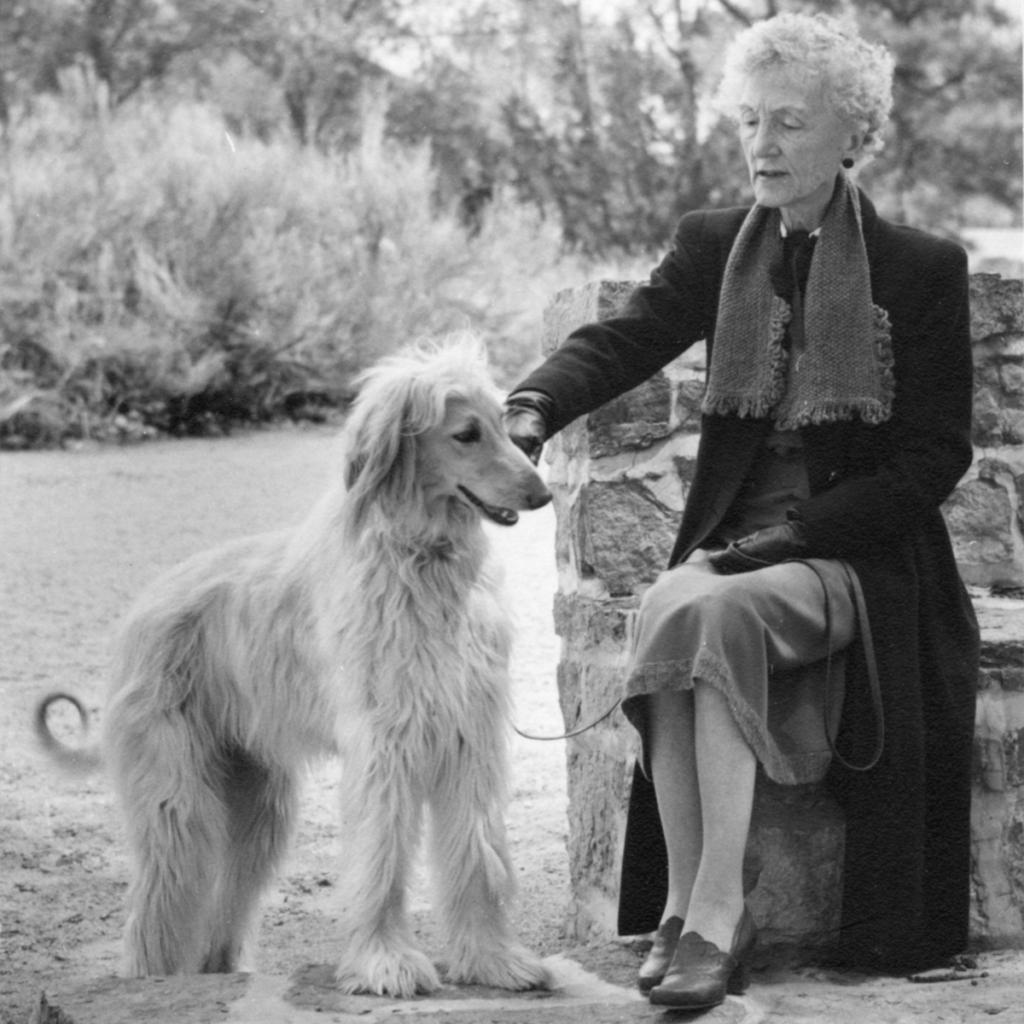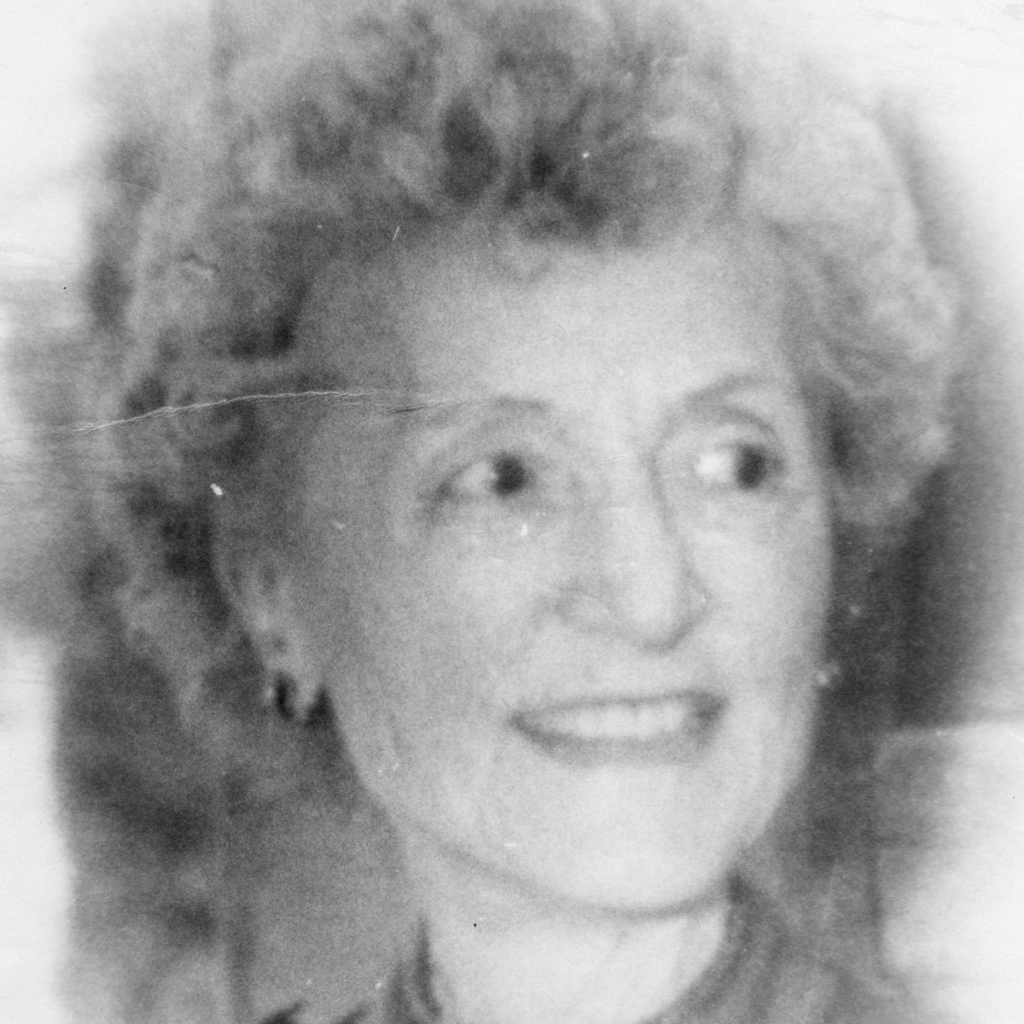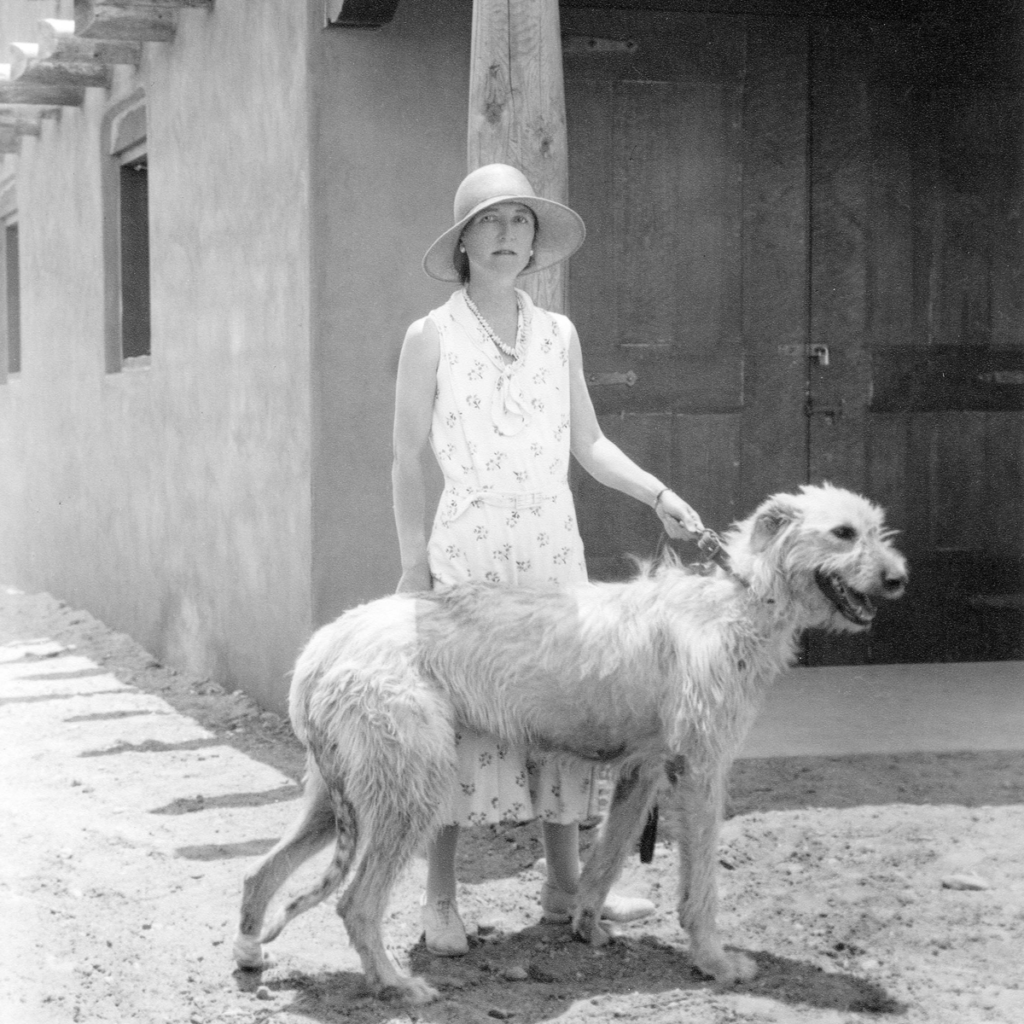Amelia Elizabeth White.
Amelia Elizabeth White
1878 - 1972
Santa Fe County
Her magnificent estate on Garcia Street, now home to the School for Advanced Research (SAR), was a gathering place for Santa Fe artists, writers, and archaeologists, and White worked tirelessly to protect the heritage and improve the lives of the residents of her adopted community.
Amelia Elizabeth White and her younger sister Martha arrived in Santa Fe in 1923, purchased land, and built a magnificent estate on Garcia Street, now home to the School for Advanced Research (SAR). El Delirio, or the Madness as it was called, quickly became a gathering place for Santa Fe artists, writers, and archaeologists who flocked to its billiard house, tennis court, and swimming pool, the first in Santa Fe. Guesthouses were constructed to accommodate their visitors, who included Agatha Christie and her archaeologist husband, Max Mallowan. Built to resemble the mission church at Laguna Pueblo, the main house reflected a growing interest in Santa Fe style. Their parties were legendary and included such luminaries as William Penhallow and Alice Corbin Henderson, Witter Bynner, John Sloan, Gustave Baumann, Randall Davey, Will Shuster, and Sylvanus Morley.
Born in New York City and educated at Bryn Mawr, White enjoyed Santa Fe’s colorful traditions, especially Fiesta. Dressed in a sixteenth-century English hunting costume, she marched in the 1933 Fiesta parade, accompanied by four Irish wolfhounds. Standing 36 inches at the shoulder, they dwarfed White, who was barely five feet tall. “She was a tiny little thing,” noted archaeologist Marjorie Lambert. “She weighed perhaps not quite 90 pounds, but she had a brain on her like steel wool.”
The sisters were partial to big dogs, especially Irish wolfhounds, which they raised at El Delirio. They built a state-of-the art kennel, which they called Rathmullen, and hired Alex Scott, a professional trainer, to show their dogs. In 1934 the American Kennel Gazette described Rathmullen as “one of the leading establishments of Irish wolfhounds in the United States.” White would later raise and show Afghans under the name Kandahar Kennels.
White also worked tirelessly to protect the heritage and improve the lives of the residents of her adopted community. Deeply concerned about the welfare of New Mexico’s native peoples, she fought to protect their lands, promote their health, and preserve their traditions. In 1924, she conducted a survey of trachoma on the Navajo reservation, and during the 1930s, she funded public health nurses. She joined the Indian Arts Fund, an organization established in 1925 to preserve and promote Southwest Indian art, and donated many valuable pieces to its collection, which is now housed at SAR. Hoping to generate interest in Indian art, she also organized exhibitions and supported local artists.
Unbridled development and the destruction of historic landmarks concerned White, and in 1926 she joined Mary Austin and other like-minded individuals to establish the Old Santa Fe Association, an organization that continues to play a major role in preserving the city’s heritage. She also supported the Laboratory of Anthropology and the Wheelwright Museum of the American Indian, both of which were built on land she donated through her real estate business, the DeVargas Holding Company.
In 1937, Martha White, her beloved sister and helpmate, died of cancer. Grief stricken, Elizabeth White withdrew from society for several years, ultimately reemerging to make significant contributions to a variety of causes for another three decades. In 1939, she donated an animal shelter to the City of Santa Fe in memory of her sister and her love of animals. By 1940, she was showing dogs again. In October 1942, needing a temporary nurse for a hyperthyroid condition, she hired Catherine Rayne, who became her life-long companion. El Delirio sprang to life once again.
During World War II, White became regional director of Dogs for Defense and her kennel was used to train dogs for military action. She converted a guest house into the Martha White Memorial Gallery, organized art shows, and donated the proceeds to the war effort. In December 1945, she hosted a reception for Enrico Fermi and other scientists from Los Alamos involved with the Manhattan project.
White also purchased the home of Hilario Garcia to provide space for organized activities for neighborhood children: The Garcia Street Club for Boys and Girls opened in 1945 and continues to serve as a preschool. In 1947, she accepted an invitation to join the board of managers at SAR, then a center for the advanced study of anthropology and Indian art. She remained actively involved with SAR until her death on August 28, 1972—her 94th birthday.
White left El Delirio to SAR, which moved into her estate the following year. Resident scholars currently inhabit the old guesthouses and library, while seminars meet in the estate manager’s house. Her home is now the administration building, while SAR Press occupies the dog kennel. The swimming pool has been replaced by a reception center, but the tennis court and billiard house remain. Her legacy also lives on in the heritage she helped preserve and the institutions she fostered through her generous support.
Sources:
Jones, Arthur Frederick. “Erin’s Famous Hounds at Rathmullan,” American Kennel Gazette 51, no. 5 (1934).
Lewis, Nancy Owen and Hagan, Kay Leigh. A Peculiar Alchemy: A Centennial History of SAR. Santa Fe: School for Advanced Research Press, 2007.
Stark, Gregor and Rayne, E. Catherine. El Delirio: The Santa Fe World of Elizabeth White. Santa Fe: School of American Research Press, 1998.
Directions:
Amelia Elizabeth White
Santa Fe County
Activist | Community leader | Philanthropist |
Statehood (1912 - present) | Territorial Period (1848 - 1912) |
North Central









